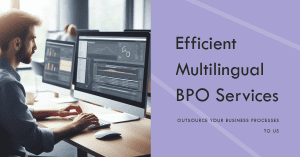Estimated reading time: 6 minutes
Key Takeaways
- Selecting an appropriate outsourcing pricing model can optimise costs and minimise risks.
- Models range from Fixed Price to Value-Based and Shared Risk-Reward.
- Clarity on project scope and requirements is essential for accurate budgeting.
- Establishing clear milestones and open communication fosters better outcomes.
Table of Contents
- Understanding Outsourcing Pricing Models
- Fixed Price Model
- Time and Materials Model
- Cost Reimbursable Model
- Consumption-Based Pricing
- Milestone-Based Pricing
- Value-Based Pricing
- Incentive-Based Pricing
- Shared Risk-Reward Model
- Project-Based Pricing
- BPO Pricing Models
- Economic Price Adjustment
- Pricing Model Selection
- Conclusion
- FAQs
Understanding Outsourcing Pricing Models
Outsourcing pricing models are structured approaches that determine how service providers are compensated for their work. Selecting the right pricing model is critical for business success, as it impacts flexibility, cost predictability, and risk management. Common outsourcing cost structures include
Fixed Price,
Time and Materials, and
Cost Reimbursable models, among others.
The choice of pricing model can significantly influence overall project outcomes and financial planning. As businesses navigate the complex world of outsourcing, understanding these models becomes crucial for making informed decisions and achieving desired results.
Fixed Price Model
The Fixed Price Model is an outsourcing pricing model where clients and vendors agree on a set price for the entire project, with payments made according to a predetermined schedule.
Benefits:
- Cost certainty
- Budget control
- Lower client risk
Drawbacks:
- Less flexibility
- Provider assumes risk for overruns
Best Fit: This project-based approach is ideal for clearly defined, small to medium-sized projects with stable requirements.
Time and Materials Model
The Time and Materials (T&M) Model is an outsourcing pricing model where clients are billed based on actual time and resources used, often at hourly, daily, or weekly rates.
Advantages:
- High flexibility
- Ease of scalability
- Simplified change management
Disadvantages:
- Difficulty in predicting final costs
- Requires close monitoring
Best Fit: T&M is ideal for large or long-term projects with evolving scopes or rapidly changing requirements.
Cost Reimbursable Model
In the Cost Reimbursable Model, clients reimburse vendors for all direct costs incurred, plus a fee or margin.
Pros:
- Transparency in actual costs
- Encourages detailed reporting
Cons:
- Lack of incentive for cost control
- Potential for higher administrative burdens
When to Use: Suitable for research and development, pilot projects, or projects with highly uncertain scopes.
Consumption-Based Pricing
Consumption-Based Pricing is a model where clients pay based on actual usage, much like utility billing.
Benefits:
- Aligns costs with business activity
- Offers scalability
Limitations:
- Potential for cost spikes during high demand
- Challenges in budgeting
Best Fit: Perfect for cloud services, IT infrastructure, and seasonal businesses with fluctuating usage.
Milestone-Based Pricing
In Milestone-Based Pricing, payments are tied to the completion of predefined deliverables or stages within the project.
Advantages:
- Focus on progress and accountability
- Improved project management
Challenges:
- Defining clear, measurable milestones
- Potential for payment disputes
Applications: Best for projects with distinct phases or deliverables that can be tracked and verified.
Value-Based Pricing
Value-Based Pricing determines costs based on the value delivered rather than time or resources expended.
Benefits: Strong incentive for performance and innovation.
Risks: Potential disagreements over what constitutes “value” and difficulties quantifying it.
Best Fit: Suited for high-impact, outcome-driven engagements like consulting or transformation projects.
Incentive-Based Pricing
With Incentive-Based Pricing, vendors earn additional compensation for surpassing predefined performance metrics or targets.
Benefits:
- Aligns provider and client interests
- Drives quality and efficiency
Effective When: There are measurable performance improvements that can be rewarded.
Shared Risk-Reward Model
The Shared Risk-Reward Model involves both client and vendor sharing the uncertainties and benefits of an engagement.
Advantages: Fosters partnership, boosts innovation, and balances risk.
Ideal Situations: Joint ventures, new product launches, or uncertain market entries where collaboration is vital.
Project-Based Pricing
Project-Based Pricing involves setting a price for individual initiatives, typically suited for bespoke or one-off tasks.
Benefits: Clearly defined outcomes and scope.
Challenges: Often negotiation-intensive; may not adapt well to ongoing or evolving needs.
When to Use: Ideal for short-term projects where requirements are clearly established in advance.
BPO Pricing Models
Business Process Outsourcing (BPO) pricing models can incorporate any of the previously mentioned structures. However, these models are often tied to volume or efficiency metrics and may be hybrid in nature.
Key Differences:
- High focus on process volumes
- May combine elements of multiple pricing models
Best Practices: Understand volume requirements thoroughly and align the model with desired service levels.
Economic Price Adjustment
Economic Price Adjustment clauses allow for pricing changes when economic factors like labor or material costs shift significantly.
Importance: Protects both parties from market volatility and keeps long-term agreements fair.
Impact: Ensures contracts remain viable and mutually beneficial over extended periods.
Pricing Model Selection
Guide for First-Time Outsourcers:
- Determine if cost predictability or flexibility is the priority
- Evaluate project complexity, size, and expected duration
- Consider your organization’s risk tolerance and budget constraints
Tips for Agreement: Clearly define metrics and deliverables, ensure transparent communication, and include clauses for dispute resolution to keep the partnership running smoothly.
For further guidance on selecting the appropriate outsourcing pricing model, it may be beneficial to consult with outsourcing experts who can tailor advice to your unique situation.
Conclusion
This guide has examined various outsourcing pricing structures, highlighting their features and best-fit scenarios. From Fixed Price to Shared Risk-Reward, each model offers unique benefits, drawbacks, and risk profiles. Ultimately, the decision should be based on factors such as project scope, business priorities, and the desired level of flexibility.
By aligning the pricing model with specific goals, companies can form more sustainable and productive outsourcing partnerships. Whether seeking cost predictability, scalable arrangements, or outcomes-based agreements, a well-chosen pricing structure can be the cornerstone of successful project execution. As the outsourcing landscape continues to evolve, staying informed about these models empowers businesses to make strategic decisions that “move the needle” toward growth.
FAQ
What is the best pricing model for small businesses?
Small businesses often prefer the Fixed Price or Project-Based models due to predictable costs. However, it depends on the specific project scope, budget, and need for flexibility.
How can I handle unexpected changes in project requirements?
A Time and Materials model generally provides more flexibility for evolving needs. Alternatively, including change-order clauses in Fixed Price agreements can help manage scope alterations.
Which model encourages strong collaboration?
Shared Risk-Reward and Incentive-Based models foster tight collaboration, as both parties have vested interests in the project’s success.
Are hybrid pricing models common?
Yes. Many contracts combine elements (like Fixed Price for certain milestones and T&M for ongoing enhancements) to balance cost predictability with flexibility.
How do I ensure fair economic adjustments over time?
Including an Economic Price Adjustment clause can protect both parties from market changes. Regular reviews of labor and material costs help keep pricing fair.







